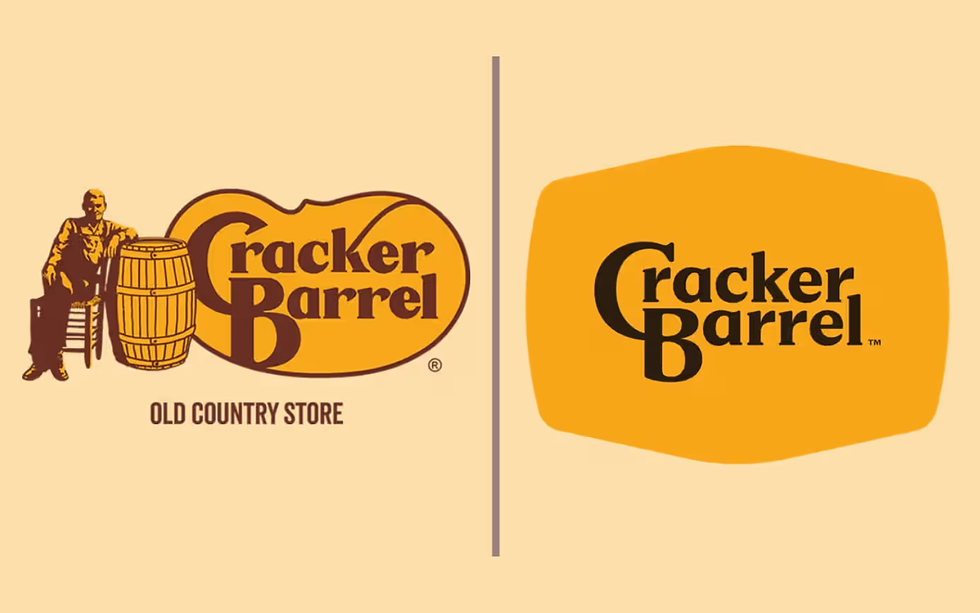Cracker Barrel’s Rebrand Flop: What Went Wrong and Why
- Belle Grace Wilkinson

- Oct 3
- 2 min read
By Belle Grace Wilkinson

Cracker Barrel, the beloved Southern-themed restaurant and old country store, recently attempted a rebrand… and it didn’t exactly land as planned. For a brand that has built its identity on nostalgia, comfort, and a distinctly “homey” vibe, any change is a balancing act. Unfortunately, Cracker Barrel’s rebrand serves as a cautionary tale for companies looking to modernize without alienating their loyal audience.
The Goal of the Rebrand
The rebrand aimed to modernize Cracker Barrel’s image, attract a younger demographic, and update its visual identity and marketing approach. The company hoped to shake off the perception of being outdated while maintaining the charm that longtime customers loved. In theory, it sounded smart: evolve with the times while keeping your roots intact.
What Went Wrong
1. Alienating Core Customers
Cracker Barrel’s original brand image thrived on nostalgia: wooden rocking chairs, old country decor, and comfort food. When the rebrand tried to modernize the logo, signage, and messaging, including completely removing the iconic Uncle Herschel, longtime customers felt disconnected. Change is always risky, but when a brand’s identity is tied to tradition, radical shifts can feel like a betrayal. One customer commented, “You change, I change!”
2. Confusing Brand Messaging
The rebrand didn’t clearly communicate what Cracker Barrel stood for in 2025. Was it modern? Traditional? Trendy? This mixed messaging left both older customers and potential younger patrons confused about what the brand represented. A successful rebrand needs clarity first, and Cracker Barrel’s attempt completely missed the mark.
3. Not Enough Market Testing
It appears the rebrand rolled out without extensive customer testing or feedback. Brands with strong emotional connections need to understand how changes will resonate before launching. A few focus groups or pilot markets could have saved Cracker Barrel from some public backlash.
4. Underestimating Emotional Attachment
Cracker Barrel isn’t just a restaurant; it’s a cultural icon for many families. People associate it with tradition, road trips, and a comforting welcome. Modernizing too quickly or superficially can unintentionally strip away the emotional elements that make a brand beloved, which is exactly what happened with Cracker Barrel.

Cracker Barrel’s rebrand flop offers a few key lessons for marketers and PR professionals:
Respect Your Core Audience: Evolution is good, but don’t lose what your customers love about your brand.
Test Before You Launch: Focus groups, surveys, and small-scale rollouts exist for a reason. Hearing from your audience before making a huge change can prevent widespread backlash.
Clarity Is Key: Make sure your messaging clearly communicates your brand’s purpose and values.
Emotional Connection Matters: Some brands are beloved for their history and traditions. Modernization should enhance, not erase, that connection. Tread carefully!
The Bottom Line
Cracker Barrel’s attempt to modernize is a reminder that even well-intentioned rebrands can backfire if they ignore the brand’s emotional core. For marketers, it’s a valuable lesson. Change is necessary, but it must be carefully considered, tested, and aligned with the values that made your brand beloved in the first place.









Comments